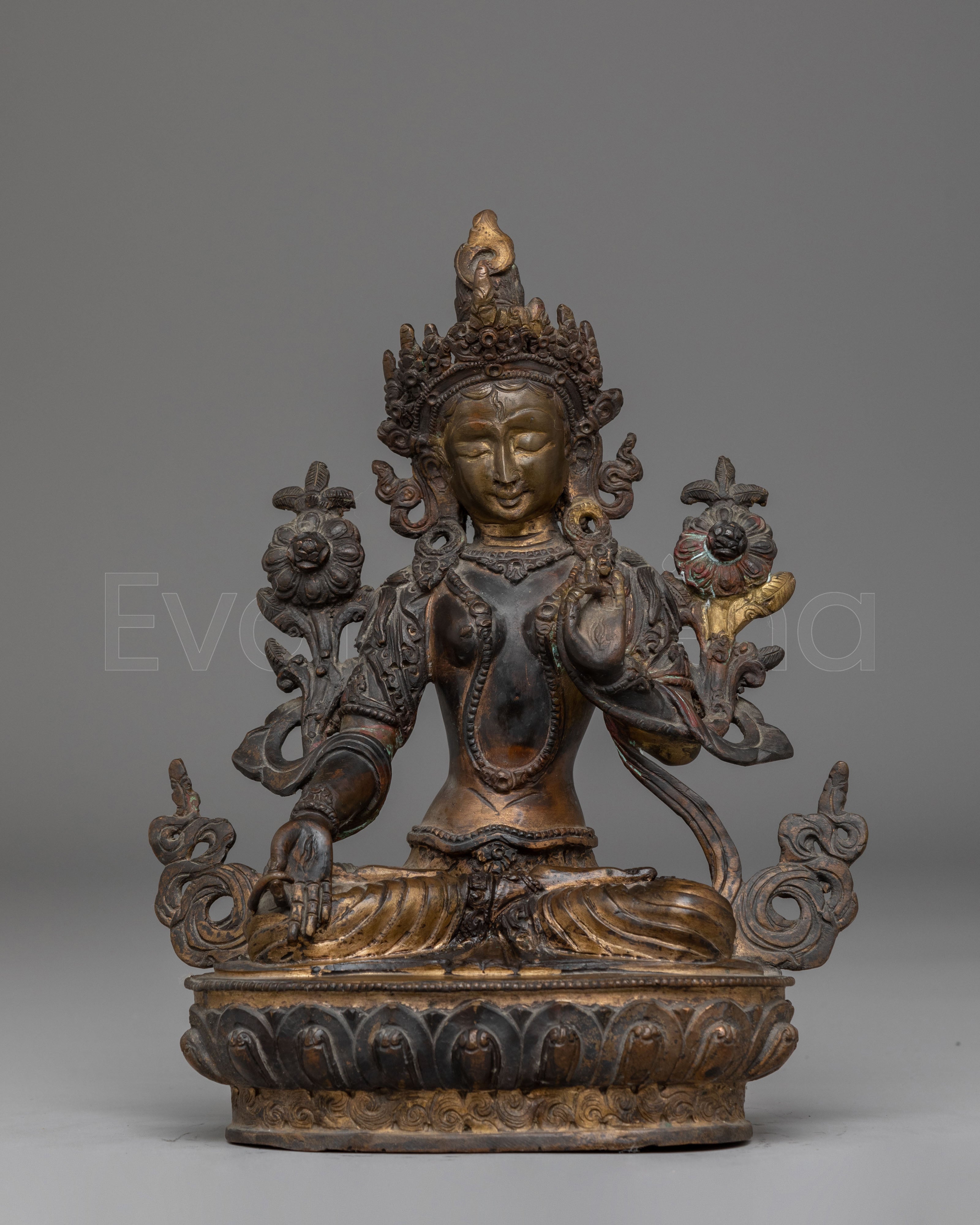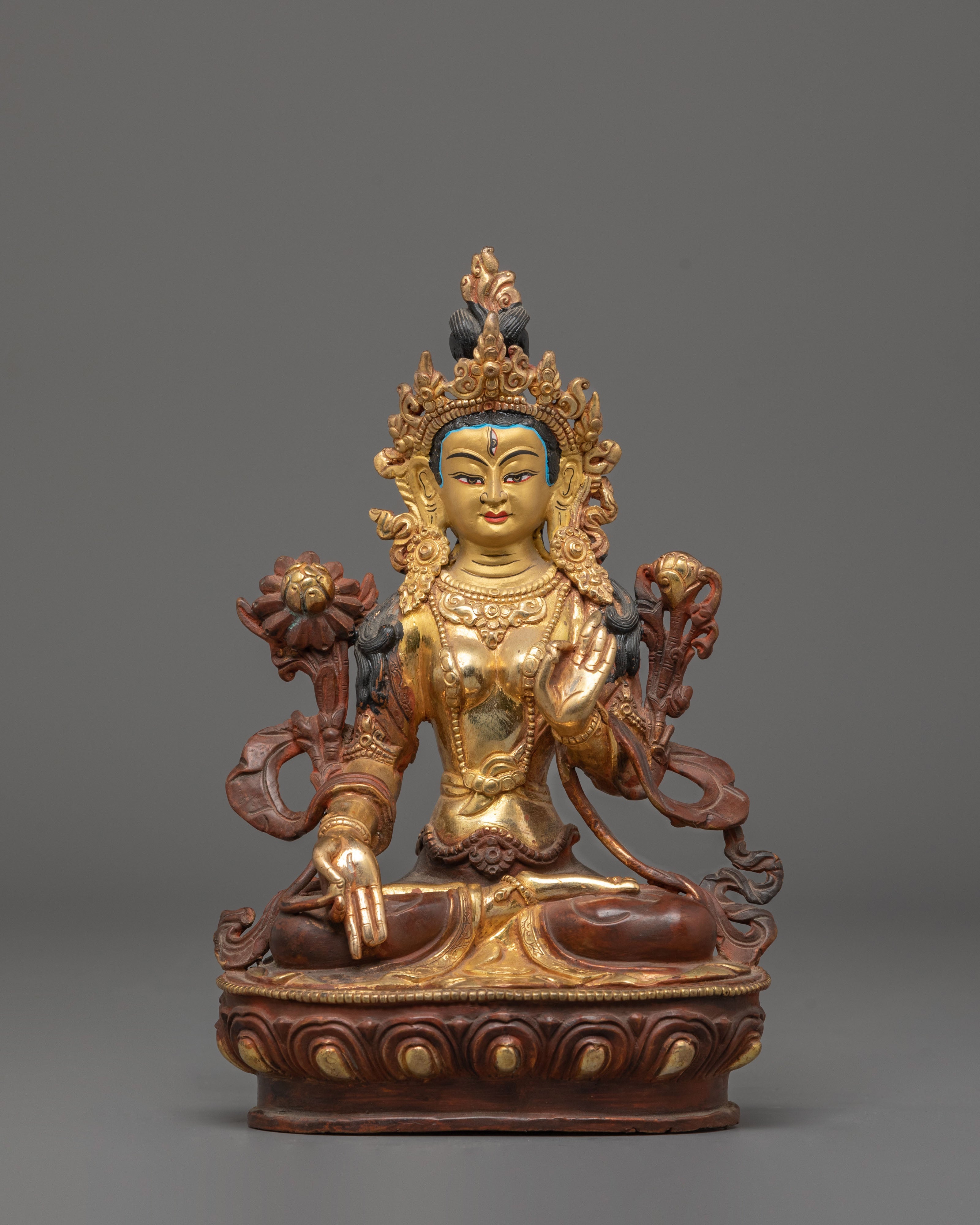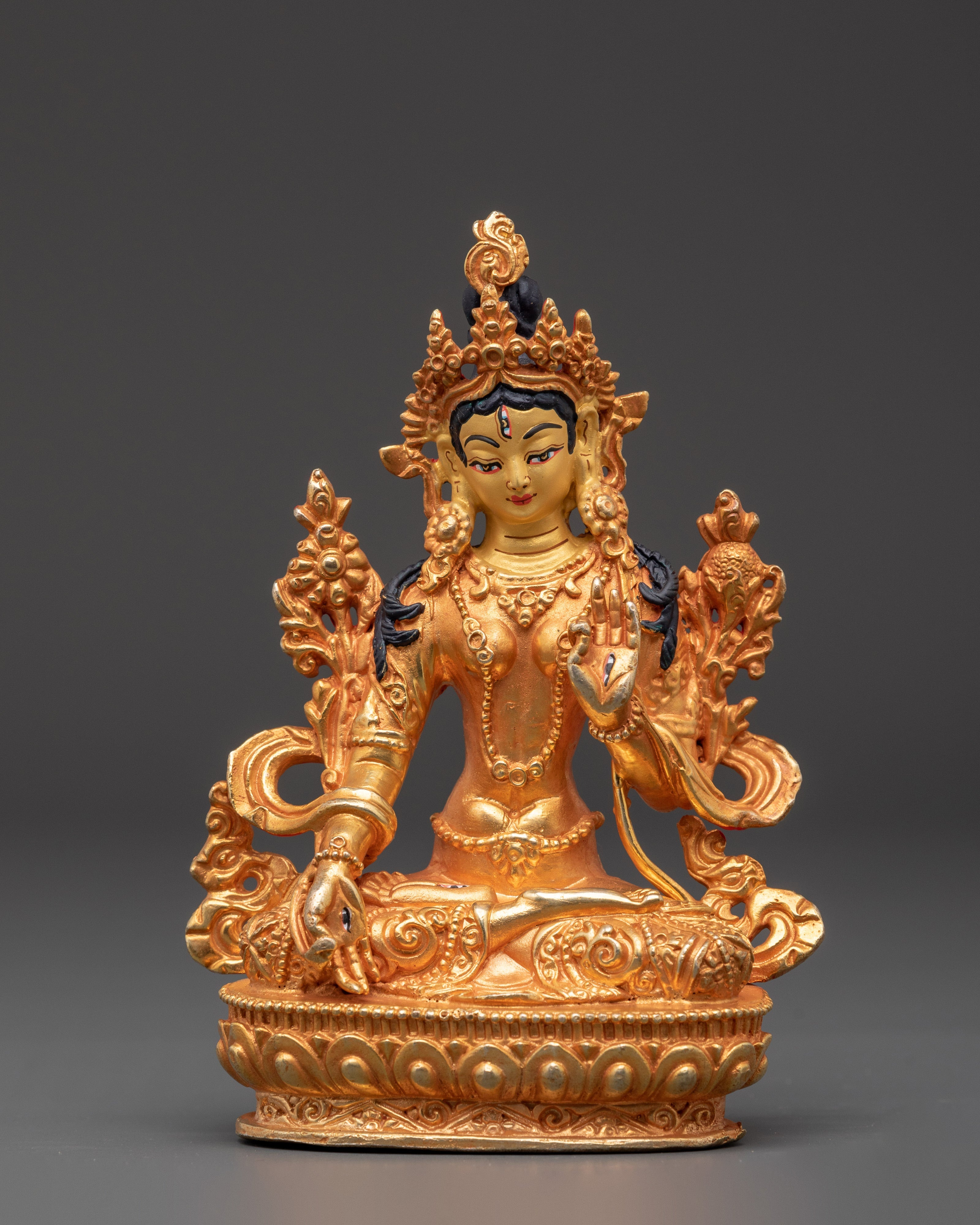Tara Statue
97 products
Showing 1 - 24 of 97 products
Tara: The Compassionate Goddess in Tibetan Buddhism
Background and Significance: Tara, also known as "Arya Tara" or "The Liberator," is a revered figure in various Buddhist traditions, with a particular emphasis on Tibetan and Vajrayana Buddhism. She is a Bodhisattva, an enlightened being who has chosen to remain in the world to aid sentient beings in attaining liberation. Tara is closely associated with compassion, protection, and the swift removal of obstacles to enlightenment.
Tara is significant because she is accessible to practitioners and embodies compassion. She is often called the "Mother of all Buddhas" and is believed to offer boundless support and assistance to those who seek her guidance. Her well-known methods are highly regarded for helping individuals overcome fear, sorrow, and adversity, making her a central figure in the spiritual lives of many Buddhists.
Attributes and Iconography: Tara can manifest in various forms and colors, each symbolizing a distinct aspect of her compassionate nature. The two most common forms of Tara are Green Tara and White Tara.
- Green Tara: Often depicted with a green complexion, Green Tara represents her ability to dispel hardship and obstacles swiftly. She is displayed in a posture ready to rise and aid those in need. Her left hand makes a protective gesture (abhaya mudra), while her right hand makes a wish-granting gesture (varada mudra). Green Tara is responsible for protection and compassionate action.
- White Tara: White Tara is portrayed with white skin, symbolizing longevity and purity. She often holds a white lotus, representing spiritual awakening and purity. White Tara is revered for her ability to infuse the practitioner's life with peace and tranquility and is associated with healing and longevity. Tara can manifest in other colors as well, each carrying its significance, such as Red Tara (power and magnetism) and Black Tara (protection from dark forces and fear).
Associated Stories and Beliefs: Various Buddhist traditions offer different origin stories for Tara, but a standard narrative describes her arising from the tears of the Bodhisattva of Compassion, Avalokiteshvara. Avalokiteshvara wept upon witnessing the profound suffering in the world, and Tara was born from his tears. She vowed to assist every sentient being on their journey to enlightenment.
Tara is renowned for the practice of the 21 Taras, in which each Tara represents a distinct facet of her compassionate nature and provides support for specific goals or obstacles. Practitioners recite prayers or mantras associated with these 21 Taras to seek their blessings and assistance.
In Buddhist practice, Tara, the Compassionate Mother of Enlightenment, holds a revered place, particularly in Tibetan Buddhism and the Vajrayana school. She is a cherished and respected figure due to her compassion, quick response to suffering, and practitioner accessibility. Tara's imagery and practices underscore the importance of compassion, self-protection, and removing obstacles to enlightenment. As a symbol of inspiration and guidance, she serves those who seek her support in overcoming life's challenges and progressing to spiritual enlightenment.
























